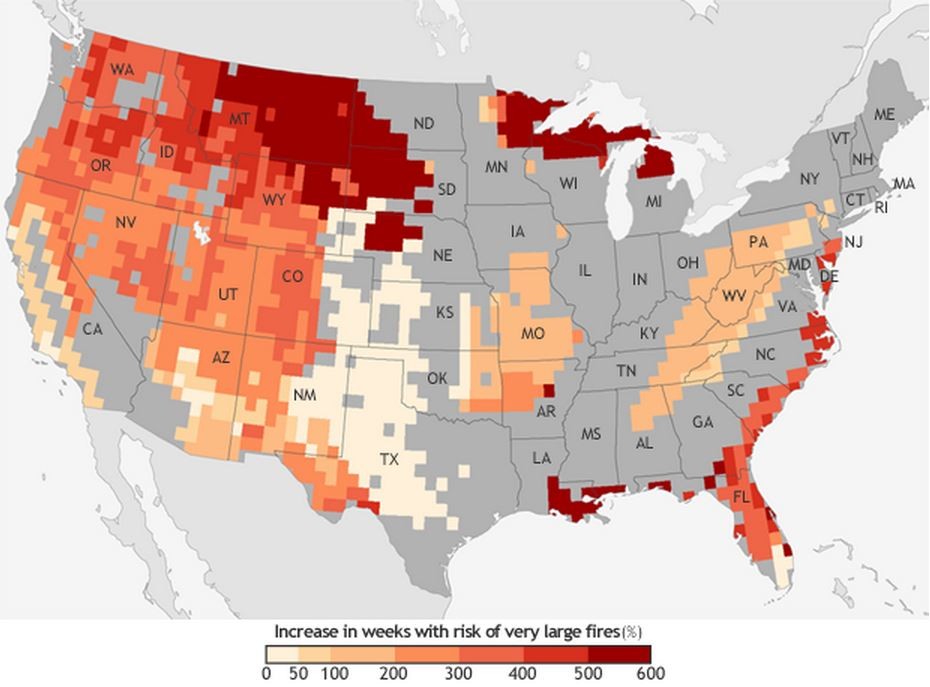NOAA Maps The Raging Future of American Wildfires
The risk of major blazes could increase 600 percent by mid-century, say scientists.
On the one hand, the warming atmosphere is predicted to drench many parts of the U.S. with extreme rain. On the other, for much of the year it’ll likely desiccate vast areas into brittle tinder, setting the stage for more frequent and powerful wildfires.
Increasingly balmy temperatures and a steady lengthening of the wildfire season (peep what’s happening this year in Alaska and Canada) will light a flame under America’s fire potential. By mid-century, large hunks of the country—including the West, the Gulf Coast, and the forested Great Lakes—could see a sixfold increase in weeks with a threat of major fires, according to researchers at the University of Idaho, the U.S. Forest Service, and elsewhere.
Using climate models, the scientists project a future where “very large fires” have ample opportunity to explode, according to a paper in the International Journal of Wildland Fire. This class of conflagration is responsible for charring most of the land in many parts of the nation. Aside for the above-mentioned places, the researchers say, the risk of large fires could intensify in Northern California’s Klamath Mountains and Sierra Nevada and from Florida up the East Coast.
Thanks to the folks at NOAA, we can visualize the future of fire danger in the Lower 48. This map shows predicted weeks of large-fire risk stacked atop each other from 2041 to 2070. Areas in darkest red face the most-prolonged hazard windows:

NOAA puts the charbroiled face of tomorrow’s fires into context with what’s happening today:
At this very moment, more than 70 wildfires are burning throughout the West, putting homes, lives, and livelihoods at risk. The smoke created by these fires exacerbates chronic heart and lung diseases while also degrading visibility and altering snowmelt, precipitation patterns, water quality, and soil properties. In addition to public health impacts, projected trends in extreme fire events have important implications for terrestrial carbon emissions and ecosystems.
The authors of the study also note that these findings could place a burden on national and regional resources for fighting fires. Fire suppression costs in the U.S. have more than doubled in recent decades, exceeding $1 billion per year since the year 2000, the National Interagency Fire Center reports. The vast majority of that money is spent on large incidents.
NEXT STORY: The Secret Suffering of the Middle Manager


